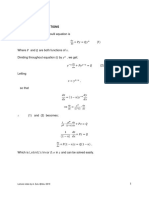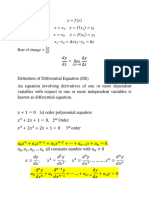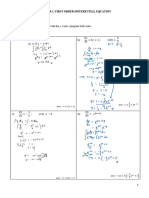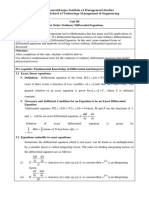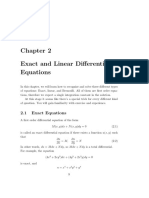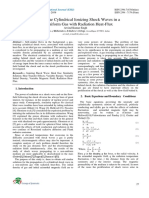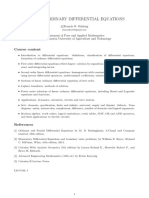0% found this document useful (0 votes)
123 views15 pagesChapter 02 - ODE04
1. The document discusses first order differential equations including separable, linear, and exact equations.
2. It provides definitions and solution methods for each type of equation, including using integrating factors for linear equations and checking for an exact differential for exact equations.
3. Examples and exercises are presented with full solutions shown for several problems, including using initial conditions to solve linear initial value problems.
Uploaded by
Ahsanul Amin ShantoCopyright
© © All Rights Reserved
We take content rights seriously. If you suspect this is your content, claim it here.
Available Formats
Download as PDF, TXT or read online on Scribd
0% found this document useful (0 votes)
123 views15 pagesChapter 02 - ODE04
1. The document discusses first order differential equations including separable, linear, and exact equations.
2. It provides definitions and solution methods for each type of equation, including using integrating factors for linear equations and checking for an exact differential for exact equations.
3. Examples and exercises are presented with full solutions shown for several problems, including using initial conditions to solve linear initial value problems.
Uploaded by
Ahsanul Amin ShantoCopyright
© © All Rights Reserved
We take content rights seriously. If you suspect this is your content, claim it here.
Available Formats
Download as PDF, TXT or read online on Scribd
/ 15
